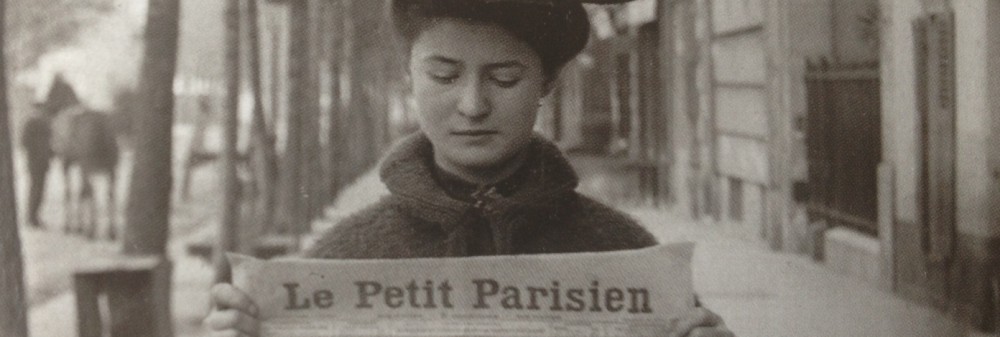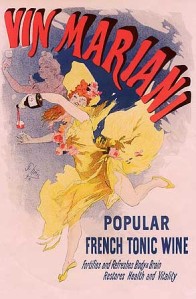Cycling was all the rage in fin de siècle Paris. Bold women ventured out in the streets scaring pedestrians with their provocative cycling costumes. Predictably this provoked fears about the end of womankind.
Going through Le Journal I came across a society column of the Comtesse de Tramar. The Comtesse, author of forgotten self-help books and self-appointed police of female propriety and femininity, expresses her horror at seeing the red, puffy faces of these women cyclists, let alone their legs. ‘With her clothing’, she writes, ‘a woman must preserve her grace, her chastity, all of which make up her poetry and elegance, and this is jeopardized by the habit of showing one’s legs during the day and one’s shoulders in the evening’(Le Journal, 3 October 1895).
Le Journal catered to a bourgeois audience so the paper generally preferred to uphold convention. But money seemed to have trumped moral concerns and some of Le Journal‘s advertisements completely contradict the reactionary outrage of its columns. The bicycle was a symbol of (sexual) liberation and even then advertisers knew how to exploit this. The lack of femininity deplored by the Comtesse de Tramar had been used as a marketing strategy to sell products to the new pédaleuses. One advert published in Le Journal several months earlier offered female cyclists the magical tonic wine Mariani, a wine laced with cocaine and one of the first performance enhancing drugs. This drink would give female cyclists a ‘virile firmness, endurance and vigour’ (Le Journal, 27 July 1895). And yes, that sounds as sexually suggestive in translation as it does in the original French.
Just imagine these hordes of gender bending women cyclists on cocaine roaming the streets of Paris. No wonder the Comtesse was so horrified.
Poisonous Pens: Belle Époque Media Culture
News, Gossip, Culture and Publicity from 1900

